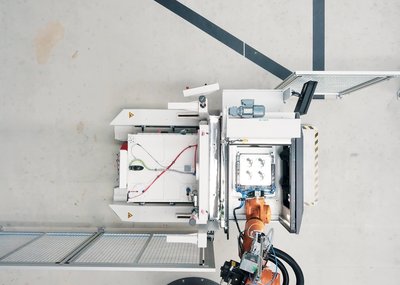Looking for a spare part for your old Hyundai Santro or Chevrolet Beat that’s no longer in production, but haven’t had much luck so far? No worries. Automakers are working on a unique solution to help you out: three dimensional or 3D printing.
Huh? What does 3D printing have to do with car parts? You’ll be surprised, but global automakers are using the cool technology to produce spare parts for vintage models. If you’re still baffled and wondering how this works, it’s really quite simple. Basically, 3D printing, or additive manufacturing, is the technology of assembling three-dimensional objects layer by layer using lasers or electron beams guided by a computer.
There is a lot of misunderstanding about 3D printing: Dassault Systemes CEO
People are using 3D printing, one of the most disruptive technologies of the digital age, to use it to make everything from car parts to prosthetic limbs. India is still warming to the idea with domestic automakers using the futuristic technology for prototyping in the hope of eventually manufacturing spare parts and, in the process, cutting costs and speeding up production.
The two leaders in the game are Tata Motors and Maruti Suzuki who are using the technology for research and development (R&D) and prototype testing. Tata Motors was one of the first to adopt the technology at its R&D facility in Pune to test its designs to identify possible flaws at an early stage in the production line.
“3D printing is an integral part of our production process,” says Pratap Bose, head of design, Tata Motors. “We are running several internal initiatives around this technology, which involve designing select parts of the vehicle that are 3D-printed. This also includes accessories and merchandise. However, the time isn’t far when 3D printing will achieve the scale and speed for mass manufacturing.”
Maruti isn’t far behind either. Koichi Nozaki, advisor, parts and accessories, Maruti Suzuki, says before launching a product, the company uses 3D printing technology to test prototypes for design, engineering, production, and mass production. It isn’t being used on the production line yet but he expects the industry to go beyond just testing and perhaps use the technology to make the body of the car in the future.
“But the core product, like the motor or the battery, is too difficult to make,” Maruti Suzuki says. “The development speed of a new bike or a new automobile will be very fast. It is possible to make spare parts using 3D printing, but the technology for that is not so developed.”
India might not be making spares with 3D printing technology yet, but tech experts are optimistic it can change the face of the auto manufacturing and spares market. A car contains more than 30,000 different small components, some of which are difficult to replace.
“That’s exactly where 3D printing could come in handy,” argues Pushpak Kypuram, managing director, Archimaze, a Hyderabad-based architectural visualisation company. “It has the potential to disrupt auto manufacturing. You don’t need to wait for the spare part to be shipped from any part of India or abroad. You save on transportation, warehousing, and obsolescence.”
Experts say 3D printing can also revolutionise car production by making customisation easier. Moreover, it is environmentfriendly as 3D-printed parts weigh less, making the car lighter, and the lighter a car, the less fuel it consumes, says Kypuram. “Actually, for any carmaker, the car’s whole internal machinery remains the same,” says Kypuram. “It is the interiors that change. 3D printing can revolutionise the whole idea of customisation. Things like hand rest, clutch rod or other car accessories can be 3D printed based on the user’s feedback.”
Global automakers have already stepped on that road. German carmaker Porsche, for example, uses 3D printing to make the release lever for the clutch of Porsche 959, a vintage model. The Porsche Classic division calls 3D printing “an ideal economic alternative” for small production of unavailable parts. German auto giant BMW has been using 3Dprinted components in series production since 2012. The additive manufacturing facility in its Research and Innovation Center in Munich produces about 140,000 3D-printed parts every year, according to technology website New Atlas. They include cosmetic plastic bits for custom-made Minis, aluminium mountings for the soft roof of the i8 Roadster, and parts of fuel pumps in some of its racing cars.
BMW attests that 3D-printed parts are cheaper and faster to make. One of the 3D printers it tested as part of its efforts to refine its series manufacturing processes is Hewlett Packard’s Multi Jet Fusion technology. This innovation is based on planar printing, and is faster and cheaper than conventional point-to-point 3D printing methods.
HP launched its 3D printing solutions in India in January, and is in talks with some auto majors here though it does not see massive adoption of its technology soon.
“With our technology, we can make physical parts 10 times faster and at half the cost of cur - rent 3D-printing systems,” says Sumeer Chandra, managing director, HP Inc. India.
The technology was in - vented by American engineer Charles Hull more than three decades ago, but for years it was seen as an obscure industrial process. Now, it’s changing the face of sectors such as aerospace, healthcare, construction and education with 3D printed products such as homes, bridges, and even guns. Market research firm 6W research projects the Indian 3D printing market will be worth $79 million by 2021. So, if you’re in the market for an elusive spare part for your car, it might be only a matter of time before you get your hands on it.
Source: fortuneindia.com


